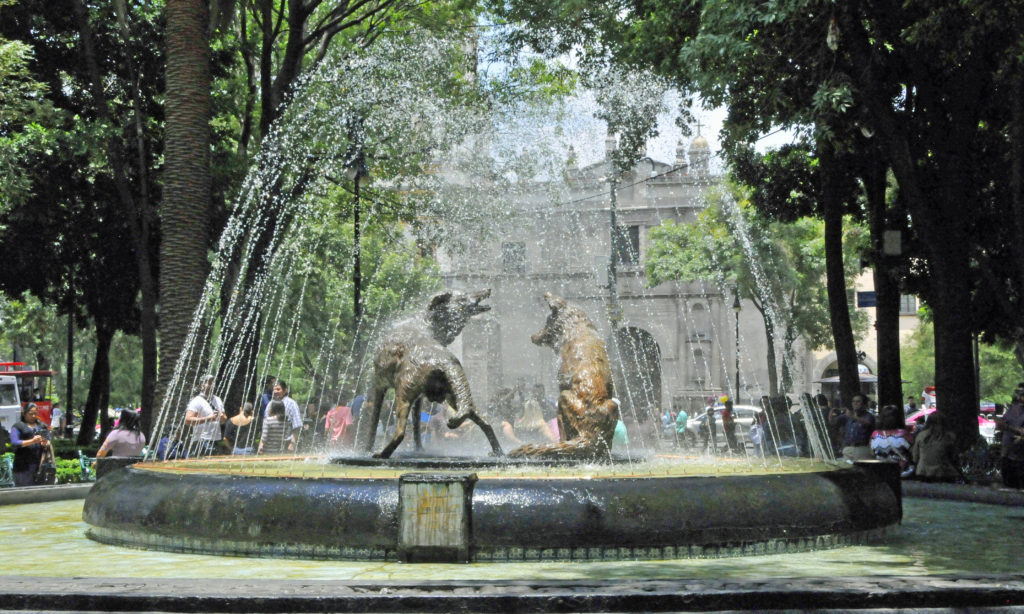
The historic heart of Coyoacán is the second most popular tourist destination in Mexico City. An iconic fountain at its center pays tribute to its history.
In the late twelfth century, the Tepanecs established a village on the southern shore of Lake Texcoco in the Valley of Mexico. They named the village Coyoacán, meaning “place of many coyotes” in Nahuatl, a language they shared with the Aztecs. For both Tepanecs and Aztecs, coyotes represented cunning and sexual prowess and were the model for the god they called Huehuecoyotl (Old Coyote). In 1519, the Tepanecs supported Hernán Cortés against the Aztecs and Cortés launched his attack against Tenochtitlán, the Aztec capital, from Coyoacán. After defeating the Aztecs, Cortés made Coyoacán the capital of New Spain. In 1520, monks brought to Coyoacán to convert the Tepanecs began building the Baroque Iglesia de San Juan Bautista (Church of Saint John the Baptist) in the center of Coyoacán. Coyoacán remained an independent municipality until the mid-nineteenth century, when it became part of Mexico City.
Today, the Borough of Coyoacán includes 29 blocks of colonial Coyoacán. Adjacent plazas, jointly covering almost six acres and populated with Indian laurel trees, attract visitors seeking a refuge from the din of much of Mexico City. Plaza del Centenario (Centennial Square) was established in 1921 on land once belonging to Iglesia de San Juan Bautista to honor the 100th anniversary of Mexican independence. In 1967, the city erected Fuentes de los Coyotes (Fountain of the Coyotes), featuring a bronze sculpture of two coyotes surrounded by jets of water, in the center of Plaza del Centenario. The fountain recognizes both the importance of coyotes to the original occupants of the site and the magical properties some residents of Mexico still ascribe to this animal, whose English and Spanish names derive from its name in Nahuatl.